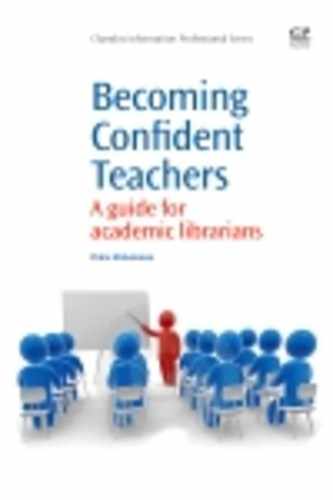0%
16Chapters
0-1Hours read
0kTotal Words
Book Description
Becoming Confident Teachers examines the teaching role of information professionals at a time of transition and change in higher education. While instruction is now generally accepted as a core library function in the 21st century, librarians often lack sufficient training in pedagogy and instructional design; consequently finding their teaching responsibilities to be stressful and challenging. By exploring the requirements and responsibilities of the role, this book guides teaching librarians to a position where they feel confident that they have acquired the basic body of knowledge and procedures to handle any kind of instructional requests that come their way, and to be proactive in developing and promoting teaching and learning initiatives. In addition, this book suggests strategies and methods for self-development and fostering a “teacher identity, giving teaching librarians a greater sense of purpose and direction, and the ability to clearly communicate their role to non-library colleagues and within the public sphere.- Specifically examines the causes of stress among teaching librarians, zeroing in on recognisable scenarios, which are known to ‘zap’ confidence and increase teacher anxiety among librarians
- An up-to-date and easily digestible take on the role and responsibilities of the teaching librarian
- Identifies the major trends that are transforming the teaching function within professional academic librarianship
Table of Contents
- Cover image
- Title page
- Table of Contents
- Copyright
- List of tables
- About the author
- Acknowledgements
- Introduction
- Chapter 1: The evolving role of the teaching librarian
- Chapter 2: Teaching librarians: 10 concepts shaping the role
- Abstract:
- Developing a ‘teacher identity’
- Reflective practice
- Developing a personal teaching philosophy and pedagogical knowledge base
- The virtual learning environment
- Teaching a diverse student base
- Information literacy for graduate students and researchers
- Instructional training for librarians
- Action research in practice
- Reinvigorated strategies for collaboration
- Advocacy – spreading the word
- Exercises and reflections
- Chapter 3: Preparing teaching librarians for practice: focusing on the basics
- Abstract:
- What are the basics?
- Conceptualising information literacy
- Articulating the educational mission of the library
- Learning theories
- Broad learning frameworks
- Instructional needs assessment
- Writing goals, objectives and intended learning outcomes
- Selecting teaching and learning activities
- Creating effective learning materials
- Aligning assessment with learning outcomes and activities
- Promotion and outreach
- Exercises and reflections
- Chapter 4: Confidence-zappers and how to handle them
- Abstract:
- ‘Attendance at our elective information literacy workshops is poor – what can I do to encourage students to sign up?’
- ‘How can I facilitate active learning with such a large group of students? Is it possible to do more than lecture?’
- ‘I’m having trouble keeping the students interested in class – they seem bored and unmotivated. Is there anything I can do?’
- ‘It seems like everyone on campus is using the VLE/CMS for their teaching, and I feel left behind – how can I get started with it?’
- ‘I have to teach a group of adult learners and I find it intimidating – how can I live up to their expectations?’
- ‘A lecturer has asked me to give a one-hour session with her class, but no specific idea of what she wants me to cover – how can I develop an effective session?’
- Exercises and reflections
- Chapter 5: Personal and professional development as a teaching librarian
- Abstract:
- Evaluation of teaching performance
- Student evaluation of teaching
- Peer evaluation of teaching
- Applying for teaching grants and awards
- Teaching portfolios
- Reflective journals and blogs
- Mentoring
- Professional learning communities
- Creating and sustaining communities of practice
- Publishing in journals and presenting at conferences
- Exercises and reflections
- Chapter 6: What librarians think: teaching and learning in the real world
- Abstract:
- Librarians’ work roles, training and involvement in teaching
- Involvement in teaching networks and communities
- Teaching grants and awards
- Librarians’ beliefs about how role is perceived by ‘outsiders’
- Librarians’ pre-employment role conceptions compared with current role experience
- Librarians’ confidence in teaching
- Librarians’ challenges in the teaching role
- What do librarians enjoy about teaching?
- Librarians’ conceptions of ‘good’ teaching
- Librarians’ additional comments about the teaching role
- Academic librarians’ experience of teaching: a short survey
- References
- Index
